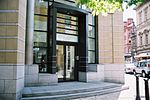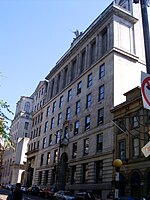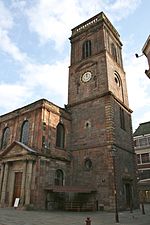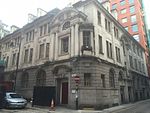53 King Street
Baroque Revival architectureCommercial buildings completed in 1915Edwardian architectureGrade II listed banksGrade II listed buildings in Manchester ... and 5 more
Greater Manchester building and structure stubsHistoric bank buildingsOffice buildings in ManchesterStone buildingsUnited Kingdom listed building stubs

53 King Street is an Edwardian Baroque bank on King Street in Manchester, England. Designed by architect Charles Heathcote, it opened in 1913 and was granted Grade II listed building status in 1974. It used to house a branch of Lloyds TSB. In 2009, the building was sold for £6 million. The building stands on the site of the old Manchester Town Hall.
Excerpt from the Wikipedia article 53 King Street (License: CC BY-SA 3.0, Authors, Images).53 King Street
King Street, Manchester City Centre
Geographical coordinates (GPS) Address Nearby Places Show on map
Geographical coordinates (GPS)
| Latitude | Longitude |
|---|---|
| N 53.48125 ° | E -2.2443 ° |
Address
L'Antica Pizzeria da Michele
King Street
M2 4NH Manchester, City Centre
England, United Kingdom
Open on Google Maps










